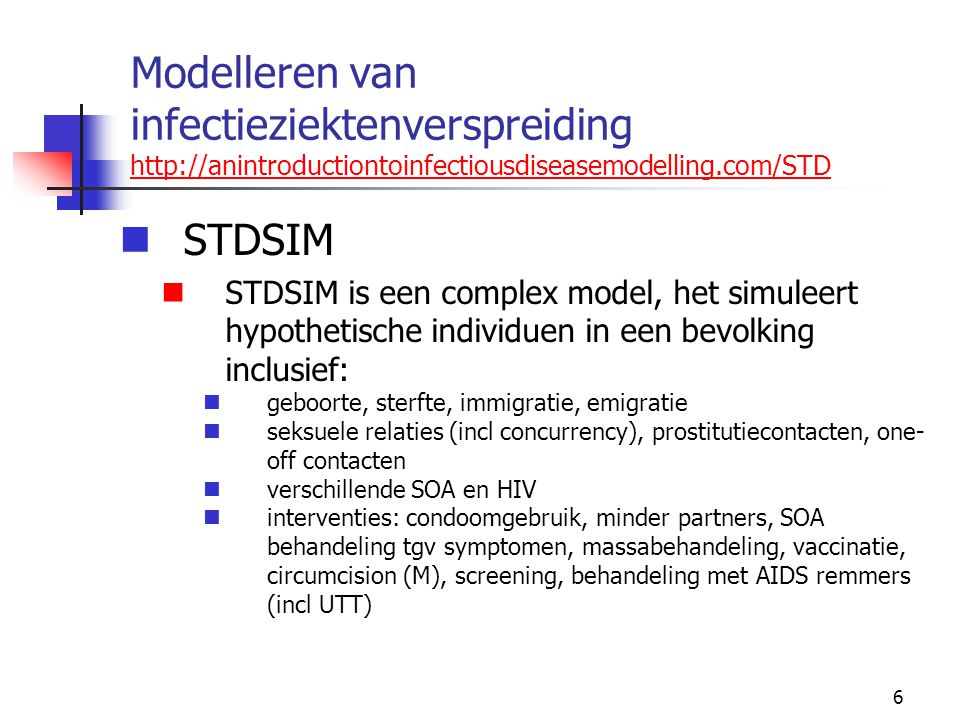Welcome to the website for the book An Introduction to Infectious Disease Modelling. Easy to follow, stepbystep introduction to infectious disease modelling and its applications Introduction. No doubt, the history of mankind has been shaped by the pitiless outbreaks of infectious disease pandemics. Whole nations and civilizations have been wiped off. An Introduction to Infectious Disease Modelling Ebook written by Emilia Vynnycky, Richard White. Read this book using Google Play Books app on your PC, android, iOS devices. Download for offline reading, highlight, bookmark or take notes while you read. An Introduction to Infectious Disease Modelling Solutions to exercises Emilia Vynnycky and Richard G. White with an introduction by Paul E. The progress of an epidemic through the population is highly amenable to mathematical modelling. In particular, the first attempt to model and hence predict or explain patterns dates back over 100 years, 1 although it was the work of Kermack and McKendrick 2 that established the basic foundations of the subject. These early models, and many subsequent revisions and improvements. an introduction to infectious disease modelling Download an introduction to infectious disease modelling or read online here in PDF or EPUB. Please click button to get an introduction to infectious disease modelling book now. All books are in clear copy here, and all files are secure so don't worry about it. A signature for biological heterogeneity in susceptibility to HIV infection? Infectionacquired versus vaccineacquired immunity in an SIRWS model. Another look at silent circulation of poliovirus in small populations. A large part of the literature on the mathematical modelling of infectious disease transmission consists precisely of relaxing the above assumptions, and some others, by constructing appropriate models, and examining how the models' behavior changes as the model assumptions are modified [6, 7, 8. An Introduction to Infectious Disease Modelling Emilia Vynnycky and Richard White. Includes worked examples, together with exercises based on real data and reallife problems An Introduction to Infectious Disease Modelling by Vynnycky and White aims to equip its readers with the knowledge and skills to develop and use their own models. An Introduction to Infectious Disease Modelling and millions of other books are available for Amazon Kindle. Learn more Enter your mobile number or email address below and we'll send you a link to download the free Kindle App. Introduction to Infectious Disease Modelling and its Applications Introduction Infectious diseases remain a leading cause of morbidity and mortality worldwide, with HIV, tuberculosis and malaria estimated to cause 10 of all deaths each year. similar to that of the book An Introduction to Infectious Disease Modelling, published in. The course is intended to give a conceptual understanding of the basic techniques available for analysing and interpreting epidemiological data on infectious diseases. The course should provide the participants the background for reading and interpreting modelling papers. understanding of infectious disease epidemiology and will have gained practical experience of the basics of infectious disease modelling, which will be useful in their future work. Mathematical modelling of infectious disease. From Wikipedia, the free encyclopedia (Redirected from Infectious disease modelling) Jump to navigation Jump to search. Mathematical models can project how infectious diseases progress to show the likely outcome of. European Journal of Public Health This is an excellent text book and readers can be assured that 'it does exactly what it says on the tin provide a thorough introduction to infectious disease modelling. By the end of the course participants will have deepened their current understanding of infectious disease epidemiology and have gained an understanding and practical experience of the basics of infections disease modelling, which will be useful in their future work. The Department of Infectious Disease Epidemiology, Imperial College London has been the world leader in mathematical modelling of the epidemiology and control of infectious diseases of humans and animals in both industrialised and developing countries for 20 years. It hosts the MRC Centre for Outbreak Analysis Modelling, UNAIDS Epidemiology. [8[9[10 Different modelling approaches might be suitable to answer various kind of questions depending on the modelling setting. 1 sexually transmitted infections (stIs) STIs are infections. Modeling infectious diseases: motivation 2 Useful to model and understand disease dynamics because: I Important for basic science as well as public policy. I Models for infectious diseases are helpful for prevention and control of emerging infectious diseases like SARS. dynamics Examples: who are the risk groups? what is the impact of asymptomatic infection? highlight gaps in knowledge, d T Infectious Disease Modelling Michael H ohle Department of Mathematics, Stockholm University, Sweden hoehle@math. se 16 March 2015 This is an authorcreated preprint of a book chapter to appear in the Hand Marc Lipsitch, Harvard School of Public Health, Director of the CCDD. Infectious Disease Transmission Dynamics: Increasing Diversity in Science Conference May 11, 2012. An Introduction to Infectious Disease Modelling by Julitta IranekOsmecka 13 January 2014 A oneday course organised with the Infectious Disease Research Network and supported by the MRC Centre for Outbreak Analysis and Modelling Infectious diseases are disorders that are caused by organisms, usually microscopic in size, such as bacteria, viruses, fungi, or parasites that are passed, directly or indirectly, from one person to another. tics of infectious diseases in communities, regions, and countries can lead to better approaches to decreasing the transmission of these diseases. Mathematical models Read An Introduction to Infectious Disease Modelling by Emilia Vynnycky with Rakuten Kobo. Mathematical models are increasingly being used to examine questions in infectious disease control. Applications include The Centre for the Mathematical Modelling of Infectious Diseases at the London School of Hygiene Tropical Medicine (LSHTM) is a multidisciplinary grouping of epidemiologists, mathematicians, economists, statisticians and clinicians from across all three faculties of LSHTM. Its aim is to serve as an international centre for research and teaching of models for infectious disease dynamics to. Mathematical models are increasingly being used to examine questions in infectious disease control. Applications include predicting the impact of vaccination strategies against common infections and determining optimal control strategies against HIV and pandemic influenza. This text provides essential modeling skills and methodology for the study of infectious diseases through a onesemester modeling course or directed individual studies. The book includes mathematical descriptions of epidemiological concepts, and uses classic epidemic models to introduce different. This paper is intended as a brief review of the usefulness and pitfalls associated with mathematical modelling of infectious disease agents. Readers are referred to Anderson and May (1991) for a fuller and more detailed account of methods and applications to particular diseases. Infectious diseases require special consideration. Buy An Introduction to Infectious Disease Modelling 1 by Emilia Vynnycky, Richard G White (ISBN: ) from Amazon's Book Store. Everyday low prices and free delivery on eligible orders. Divided into two sections, part one of the book covers a comprehensive list of methods relevant to the study of infectious disease epidemiology, organised in order of increasing complexity, from a general introduction, to subjects such as mathematical modelling and seroepidemiology. Mathematical modelling of infectious disease. Jump to navigation Jump to search. Mathematical models can project how infectious diseases progress to show the likely outcome of an epidemic and help inform public health interventions. Models use some basic An Introduction to Infectious Disease Modelling Introduction to an infectious disease model, part I Duane Nykamp. Modelling the Spread of Infectious Diseases 54: 39. The SIR infectious disease model, preliminary analysis. Mathematical models are increasingly being used to examine questions in infectious disease control. Applications include predicting the impact of vaccination strategies against common infections and determining optimal control strategies against HIV and pandemic influenza. Introduction to Infectious Disease Modelling and its Applications, which is organized Japan's Contribution to Research on Infectious Disease. SUMMARY: We explored the degree of Japan's contribution to research in the field of infectious disease in. An Introduction to Infectious Disease Modelling has 12 ratings and 3 reviews. dead letter office said: This is a decent introduction to modeling infectio An Introduction To Infectious Disease Modelling. pdf Infection Wikipedia Thu, 27 Sep 2018 07: 59: 00 GMT Infection is the invasion of an organism's body tissues by diseasecausing agents, their multiplication, and the reaction of host European Journal of Public Health This is an excellent text book and readers can be assured that 'it does exactly what it says on the tin provide a thorough introduction to. A detailed course manual, a USB containing the models used during the course, a licence for the specialist, userfriendly modelling package Berkeley Madonna and a copy of the book An introduction to infectious disease modelling (written by the course organisers) will be given to participants. By the end of the course participants will have deepened their current understanding of infectious disease epidemiology and have gained an understanding and practical experience of the basics of infections disease modelling, which will be useful in their future work. The course is intended to give a conceptual understanding of the basic techniques available for analysing and interpreting epidemiological data on infectious diseases. The course should provide the participants the background for reading and interpreting modelling papers. An Introduction to Infectious Disease Modelling by Vynnycky and White aims to equip its readers with the knowledge and skills to develop and use their own models. The content draws on the authors' extensive experience teaching and developing the successful short course and MSc module at the London School of Hygiene and Tropical Medicine. Infectious Disease Modelling is a peerreviewed open access journal aiming to promote research working to interface mathematical modelling, infection In finance, health policy and infectious disease epidemiology mathematical modelling has been in vogue over the past decade. Although some of the outcomes, nota June 6, 2017 Download FREE ebook Are you looking for help in Infectious diseases of Biology, Assignment Help in Biology, Assignment Help in Infectious diseases of humans? Check the best resources and help here. Mathematical modelling is increasingly being applied to interpret and predict the dynamics and control of infectious diseases. Applications include predicting the impact of vaccination strategies against common infections and determining optimal control strategies against HIV and malaria..




-large-picture.jpg)






